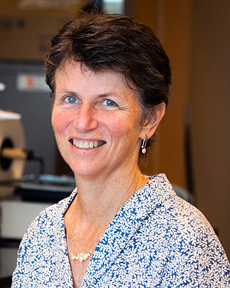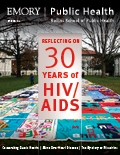Rollins/Georgia Tech receive $8 million to study air pollution

You are sitting in your car in early morning rush hour, watching the minutes tick by on the dashboard clock. Traffic congestion is part of daily life in metro Atlanta. But what are those emissions doing to your health?

Paige Tolbert is co-director of the new Southeastern Center for Air Pollution and Epidemiology in collaboration with Georgia Tech. |
Paige Tolbert, chair of the Department of Environmental Health, wants to find out. She is the co-director of the new Southeastern Center for Air Pollution and Epidemiology (SCAPE), established recently by an $8 million, five-year grant from the EPA to study the public health impact of air pollution. Armistead (Ted) Russell of the School of Civil and Environmental Engineering at Georgia Tech co-leads the center, one of four national clean air research centers funded by the EPA.
Researchers at Rollins will analyze data linking air quality with health endpoints in children and adults, including birth outcomes, asthma, and cardiac illness. Air quality engineers and scientists at Georgia Tech will develop new modeling techniques to identify and track contaminants in the air and mixtures of these contaminants suspected of causing adverse health effects. Among the planned projects is an intensive study of metro Atlanta commuters to examine their exposure to complex particulate mixtures in traffic and mechanisms of acute cardiorespiratory outcomes. The study will be among the first to measure highly sensitive biomarkers of oxidative stress in relation to air pollution exposure.
SCAPE investigators also will study air quality and acute health outcomes in five U.S. cities to understand how differences in the mix of air pollutants, weather, population susceptibility, and other factors explain differences in the association between air pollution and cardiac and respiratory illness across the cities. The results will clarify the combined impact of these factors on acute cardiorespiratory morbidity across the United States.
Says Tolbert, “We hope to understand what aspects of the air pollution mixture are most harmful and how the pollutants act together— information we can use to target control measures to protect the public’s health.”


